Chevrolet Uplander Review
An airport car rental attendant recently handed me the keys to my temporary chariot and declared “Your car is down the row to your right. It’s an ‘06 Uplander.” A what? “It’s kind of an SUV,” she kind of explained. The butt-end of a something large and ugly poked out of stall 97. The bow tie on the trim above the license plate revealed the vehicle’s manufacturer: Chevrolet. Apprehensively, I slid behind the wheel of the awkward-looking beast. I looked around. I turned to my colleague. “No wonder GM is in such bad shape.”
The Uplander’s exterior could have been penned twenty-five years ago. The awkward yet infinitely bland exterior displays all the styling finesse and surface excitement of a 1981 Chevy Malibu– with none of the stalwart sedan’s balanced proportions. You can see how GM’s designers tried to transform their plane Jane minivan into a “Crossover Sport Van”: a longer than needed snout, big-ass B-pillars, slightly larger wheels and faux skid plates. It’s an entirely unconvincing effort that somehow manages to capture the worst of both the SUV and minivan genres.
Once inside, a flip-down DVD screen attached to ceiling rails provides the only indication that “Bette Davis Eyes” isn’t about to debut on the radio. Again, it’s an interior from another era– before Chrysler, Honda and Toyota showed American soccer Moms that you could schlep the team in something very much approaching style. Hell, you can’t even get comfortable in the thing. The Uplander’s driver’s seat wouldn’t retreat far enough to accommodate my frame, and my preferred steering wheel position fell somewhere between two notches. Hello? I’m 5’11”.
Otherwise, the comfort sucks. The Uplander’s architecture, inherited from the 1997 Chevrolet Venture (whose running gear lives in perpetuity) is still too narrow to accommodate its [theoretical] complement of seven adults. And the Uplander’s plastics seem designed by rental car companies for rental car companies; their ability to withstand endless applications of industrial strength ammonia being their only saving grace.
Needless to say, the Uplander is as dreadful to drive as it is to inhabit. The loose steering requires constant tending at anything other than a dead stop. The suspension crashes more often than a demolition derby driver. The long wheelbase and epic turning circle make parking lot maneuvering a seemingly endless chore. It leans excessively in corners. But wait! There’s less!
The CSV’s 3.9-liter V6 pushrod powerplant boasts (in the ironic sense of the word) a cast iron block with cast aluminum heads, hooked-up to Ye Olde Four Speed. With constant aural reminders that it would much rather be switched off, the ancient, rough-revving mill delivers a class-leading 240hp @ 6000rpm. But it's not enough to motivate the ponderous beast into a jog. In short, the Uplander’s performance doesn’t even deserve the noun.
To GM’s credit, the Uplander completed its assigned task: transporting my colleague and me safely from airport to office, office to hotel and back. The vehicle’s lights, windshield wipers and turn signals worked. There was plenty of cargo room. The engine made the thing move forward and the brakes brought it to a stop. I observed no sharp objects that might threaten to cut or maim passengers. But all of this was done with Soviet-repressed bureaucratic adequacy.
If you doubt that the Uplander is a half-assed has-been that never was and never shoulda been, click on this link from the Uplander’s menu and select Braking, Engine and Transmission. Three years after the model’s debut and the information is still “Not yet published.” In terms of design, refinement and packaging, competitive minivans (yes, minivans) from Honda, Toyota and Chrysler are literally decades ahead of the Uplander. And proud of it.
How could a thing such as an Uplander come to be? Hundreds of GM employees spent years on its development and implementation: designers, engineers, marketers and senior management. Ultimately, all of them stamped their approval on the Uplander and proclaimed to the world THIS IS OUR BEST IDEA. If fact, the company as a whole considered the concept so inspired they felt compelled to badge engineer this execrable automotive aardvark as the Saturn Relay, Buick Terraza and Pontiac Montana.
The General has hit some home runs with a couple of products lately (e.g. the Corvette and the Pontiac Solstice / Saturn Sky). Cadillac is heading in the right direction. But these are niche vehicles, not machines for the masses. To recover from its well-documented woes, GM needs volume sales of mainstream products. Otherwise, they’re heading straight for bankruptcy. But if bankruptcy is the only way to stop GM from inflicting crap vehicles like the Uplander on unsuspecting rental car drivers and (God forbid) buyers, then I can’t help but wish the world’s largest automaker a speedy Chapter 11.
More by William C Montgomery
Latest Car Reviews
Read moreLatest Product Reviews
Read moreRecent Comments
- MaintenanceCosts In Toyota's hands, these hybrid powertrains with a single motor and a conventional automatic transmission have not been achieving the same kind of fuel economy benefits as the planetary-gear setups in the smaller cars. It's too bad. Many years ago GM did a group of full-size pickups and SUVs with a 6.0L V8 and a two-motor planetary gear system, and those got the fuel economy boost you'd expect while maintaining big-time towing capacity. Toyota should have done the same with its turbo four and six in the new trucks.
- JMII My C7 isn't too bad maintain wise but it requires 10 quarts of expensive 0W-40 once a year (per GM) and tires are pricey due size and grip requirements. I average about $600 a year in maintenance but a majority of that is due to track usage. Brake fluid, brake pads and tires add up quickly. Wiper blades, coolant flush, transmission fluid, rear diff fluid and a new battery were the other costs. I bought the car in 2018 with 18k in mileage and now it has 42k. Many of the items mentioned are needed between 20k and 40k per GM's service schedule so my ownership period just happens to align with various intervals.I really need to go thru my service spreadsheet and put track related items on a separate tab to get a better picture of what "normal" cost would be. Its likely 75% of my spend is track related.Repairs to date are only $350. I needed a new XM antenna (aftermarket), a cargo net clip, a backup lamp switch and new LED side markers (aftermarket). The LEDs were the most expensive at $220.
- Slavuta I drove it but previous style. Its big, with numb steering feel, and transmission that takes away from whatever the engine has.
- Wjtinfwb Rivaled only by the Prowler and Thunderbird as retro vehicles that missed the mark... by a mile.
- Wjtinfwb Tennessee is a Right to Work state. The UAW will have a bit less leverage there than in Michigan, which repealed R t W a couple years ago. And how much leverage will the UAW really have in Chattanooga. That plant builds ID. 4 and Atlas, neither of which are setting the world afire, sales wise. I'd have thought VW would have learned the UAW plays by different rules than the placid German unions from the Westmoreland PA debacle. But history has shown VW to be exceptionally slow learners. Watching with interest.



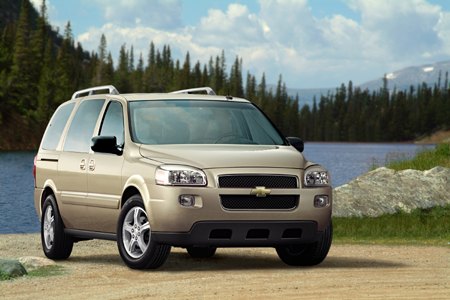



















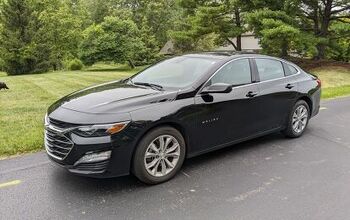

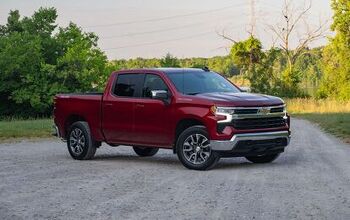
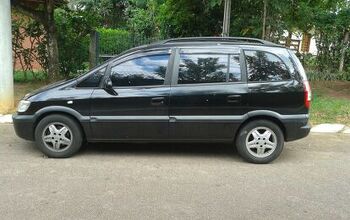





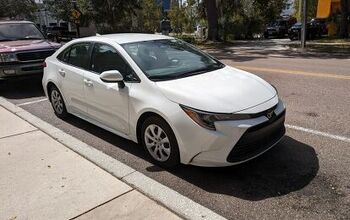




Comments
Join the conversation
Here, here, Sassy. I just bought a 2007 for a couple bucks and am thrilled to get a reliable workhorse like the uplander. These effete car snobs and their "OMG! It's so ugly! Outre! How could anyone possibly buy one?" Basically it gets you where you wanna go, hauls your peeps and stuff, and doesn't cost much.
Cope